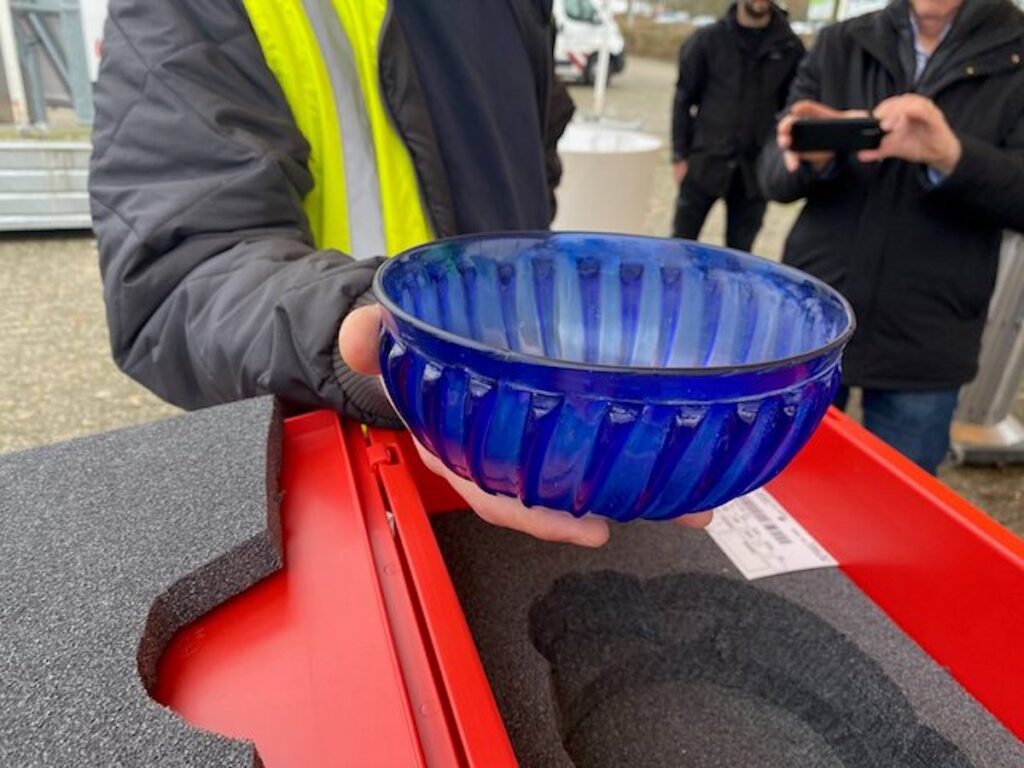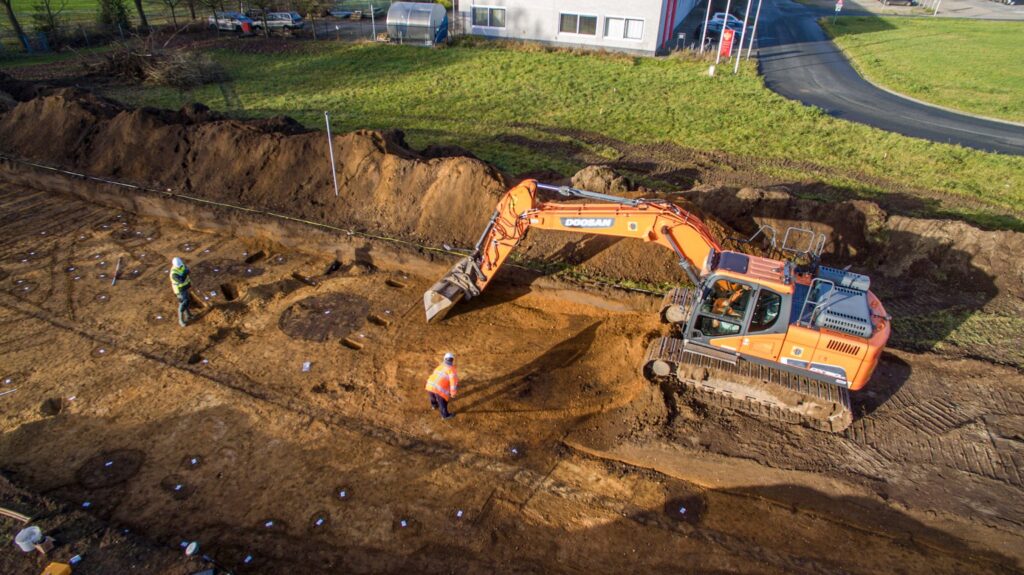2,000-Year-Old Intact Roman Glass Bowl Uncovered in the Netherlands
Archaeologists excavating a site in Nijmegen — the oldest city in the Netherlands, situated on the Waal river about six miles from the German border — have discovered a blue glass bowl estimated to be some 2,000 years old, in pristine condition.

The bowl, just small enough to sit comfortably in the palm of a hand, has a trim rim and a vertical stripe pattern with ridges on the outside.
With no chips or cracks on its surface, the object is stunningly intact. Lead archaeologist Pepjin van de Geer remarked that it was “really special,” deserving pride of place in a museum.
The ancient Roman bowl is thought to have originated from glass workshops in German cities like Cologne and Xanten, though van de Geer also entertains the possibility that it may have been traded from Italy.
“Such dishes were made by allowing molten glass to cool and harden over a mould,” he told the Dutch regional newspaper De Stentor.
“The stripe pattern was drawn in when the glass mixture was still liquid. Metal oxide causes a blue colour.”

Van de Geer’s team had been excavating the site ahead of construction for a new housing and green development project called Winkelsteeg, which promises to be a “dynamic living and working area” for the growing city.
Around the time the bowl was in use, Nijmegen was a Roman military camp that subsequently drew civilian settlement.
It was the first city in the modern-day Netherlands that was named a municipium, or Roman city, so the local Batavi inhabitants were the first in the region to be granted Roman citizenship.
The same excavation effort has unearthed Roman tombs, trinkets like dishware and jewellery, and traces of construction — which the archaeologists hope will be definitive enough to allow them to produce a map of what the settlement layout looked like.





